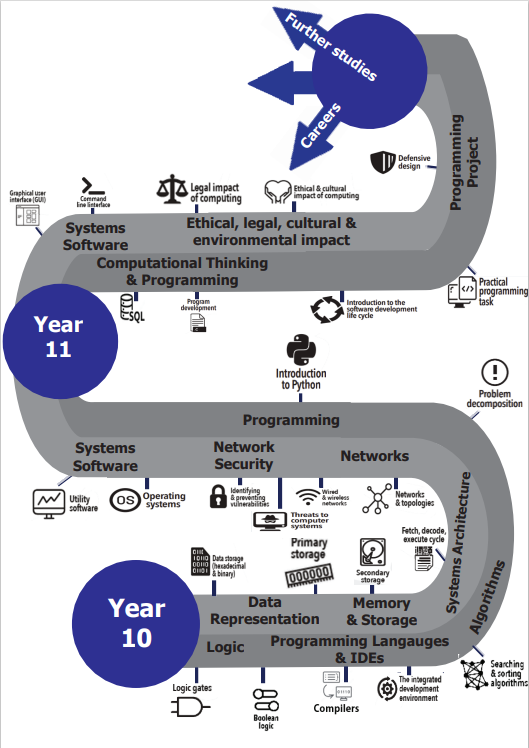KS4
GCSE Computer Science
Students may choose to study GCSE Computer Science during Years 10 and 11 – We currently follow the OCR J277 specification which consists of two theoretical papers:
Paper 1: - Computer Systems
Paper 2: - Computational, thinking, algorithms and programming
Each paper is worth 50% of the final grade awarded and has a duration of 1 hour 30 minutes. Both papers include multiple-choice questions, short responses, and 8-mark extended writing questions. Paper 2 has two sections: Section A and Section B. In Section B, questions assess students' ability to write or refine algorithms which must be answered using either OCR Exam Reference Language or a high-level programming language; at Newlands Girls’ school we use Python.
By the end of the course, it is hoped that students will be able to:
- Think creatively, innovatively, analytically, logically and critically
- Understand how to apply computational thinking and be comfortable breaking down real world problems into smaller more manageable tasks by means of abstraction, a highly transferable, desirable key skill in any subject.
- Analyse problems so that they can design, create, edit and debug programs to practically solve real world problems
- Understand the impact of digital technology on the individual and wider society
- Understand the components that make up digital systems, and how they communicate with one another and with other systems
Course Structure
Paper 1: Computer Systems
Introduces students to the theoretical knowledge that underpins Computer Science, including topics such as the central processing unit (CPU), computer memory and storage, data representation, wired and wireless networks, network topologies, system security and system software. It also looks at ethical, legal, cultural and environmental concerns associated with computer science.
Paper 2: Computational thinking, algorithms and programming
Section A: Students are given the chance to apply their knowledge and understanding of computational thinking and logic, algorithms, translators, languages, and programming techniques.
Section B – This section of the paper allows students to showcase their programming ability by, interpreting, writing and redefining either Exam Reference Language or high-level programming language to solve a range of real world problems
Practical Programming
During the Computer Science curriculum, students will develop an ability to be able to write code in a high-level programming language; Python. Students will work towards completing a large-scale programming project. As part of this project they will have to design, write, edit and refine code. Documentation will also have to be written to show how the project was tested to prove that it worked as expected. The skills developed while working on the project will enable students to easily access the content they will encounter during Section B or Paper 2.
